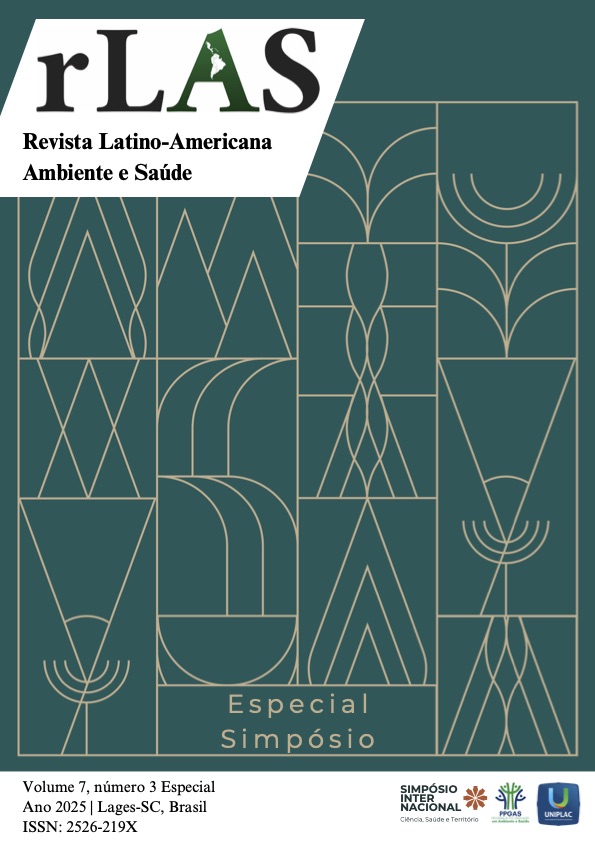Molecular detection and characterization of Apple Stem Grooving Virus in pear trees from Southern Brazil
Keywords:
phytosanitary, high-throughput sequencing, Capillovirus mali.Abstract
The pear crop (Pyrus communis L.) has high productive potential in the southern region of Brazil but is vulnerable to several viral diseases that can affect its quality and yield. This study aimed to detect and molecularly characterize Apple Stem Grooving Virus (ASGV) in pear samples collected in the municipality of São Joaquim, Santa Catarina. Three scion cultivar samples were subjected to high-throughput sequencing (HTS), resulting in approximately 41 million reads, which were subsequently filtered, assembled, and analyzed using bioinformatics tools. To validate the HTS results, PCR amplification was performed using ASGV-specific primers, confirming the presence of the virus in one of the samples, with visualization of the products by agarose gel electrophoresis. The complete genome of the identified viral isolate comprised 6,476 nucleotides and revealed two characteristic ORFs: the first encoding a polyprotein associated with viral replication, and the second encoding a movement protein. Similarity analyses with sequences deposited in GenBank indicated high levels of nucleotide identity, with 87.94% for the polyprotein and 95.62% for the movement protein. The results demonstrate the effectiveness of integrating conventional molecular methods with next-generation technologies for the identification and characterization of plant viruses, in addition to contributing to the understanding of viral diversity in pear orchards and enhancing phytosanitary monitoring strategies in the region.
References
AGRIOS, G. N. Plant Pathology. 5. ed. San Diego: Academic Press, 2024.
ARAUJO, L. et al. Doenças da macieira e da pereira. Informe Agropecuário, v. 37, p. 61-74, 2016.
CARRA, B. et al. Plant growth regulators to increase fruit set and yield of ‘Rocha’ pear trees in Southern Brazil. Anais da Academia Brasileira de Ciências, v. 93, n. 3, p. 1-16, 2021.
COSTA, L. C. et al. High-throughput detection of a large set of viruses and viroids of pome and stone fruit trees by multiplex PCR-based amplicon sequencing. Frontiers in Plant Science, v. 13, 12 dez. 2022.
FERRADINI, N. et al. Characterization and phylogenetic analysis of ancient Italian landraces of pear. Frontiers in Plant Science, v. 8, p. 751, 9 maio 2017.
GERUM, A. F. A. A. et al. Fruticultura tropical: potenciais riscos e seus impactos. Cruz das Almas, BA: Embrapa Mandioca e Fruticultura, 2019. (Embrapa Mandioca e Friticultura. Documentos, 232).
IBGE. Instituto Brasileiro de Geografia e Estatística. Produção de Maçã. 2023.
ICTV. International Committee on Taxonomy of Viruses. 2025. Disponível em: https://ictv.global/taxonomy
LOPES, C.A.; ÁVILA, A.C. Doenças do tomateiro. 2. ed. Brasília: Embrapa, v. 1, p. 151, 2005.
NICKEL, O. et al. Sequence analysis of the capsid protein gene of an isolate of apple stem grooving virus, and its survey in southern Brazil. Fitopatologia Brasileira, v. 26, p. 655–659, 2001.
NICKEL, O.; FAJARDO, T. V. M. Eliminação de vírus latentes de macieiras por quimioterapia e cultivo de meristemas in vitro. Bento Gonçalves, RS: Embrapa Uva e Vinho, 2016. 36 p. (Embrapa Uva e Vinho. Comunicado Técnico, 193).
VILLAMOR, D. E. V. et al. High throughput sequencing for plant virus detection and discovery. Phytopathology, v. 109, n. 5, p. 716–725, maio 2019.
WU, J. et al. High-density genetic linkage map construction and identification of fruit-related QTLs in pear using SNP and SSR markers. Journal of Experimental Botany, v. 65, n. 20, p. 5771–5781, nov. 2014.


